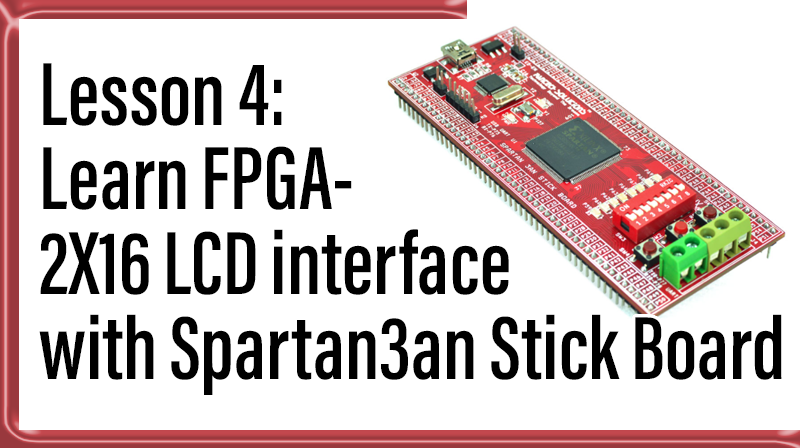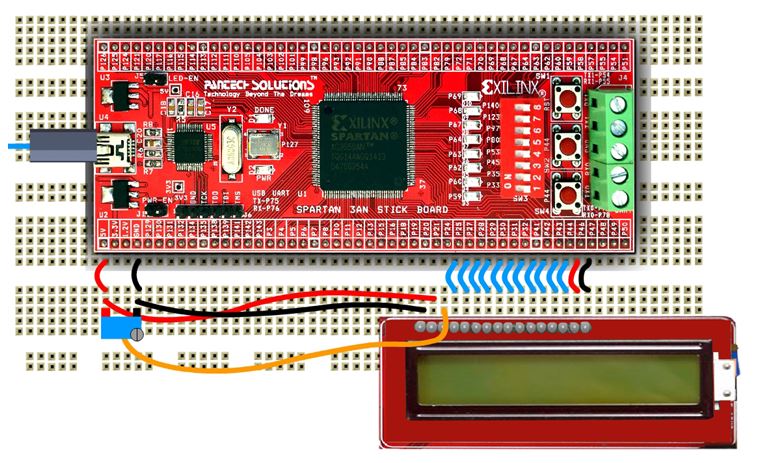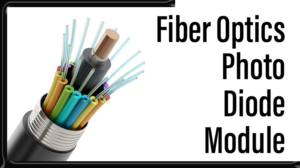
Lesson 4: Learn FPGA- 2X16 LCD interface with Spartan3an Stick Board
Spartan3an Stick Board consist of 2 rows of 48- pin Expansion connector which can be easily placed in the breadboard and interface whatever interface you want.
Let’s interface some interactive Display with Spartan3an Stick Board. 2×16 LCD can be used to display 2 Rows of 16 characters each. To make this working we need to understand the functionality of it.
LCD consist of 8- Data lines D0-D7, RS- Register Select line, RW-Read Write line, En- Enable line.
First we need to send commands to initialize the display, Curser Position, Clear Display, increment curser etc.
After sending commands, Data can be transferred to Display in the LCD.
Data can be transferred in 2 ways 8-bit mode and 4-bit mode. Here we are interfacing in 8-bit mode with the entire Data pin D0-D7.
ASCI Values for Commands used in the code
38 = Function Set: 8-bit, 2 Line, 5×7 Dots
0c = Display on Cursor off
06 = Entry Mode
01= Clear Display
C0 = Place Curser to 2nd line
ASCI Values for Data’s used in the code :
50 – P 41- A 4e- N 54- T 45- E 43- C 48- H
20- Space
53- S 4f- O 4c- L 55- U 54- T 49- I 4f- O 4e- N 53- S
VHDL Code consist for 2 counter i and j. i counter used to divide the clock and j counter used to get the array elements.
VHDL Code for 2×16 LCD Display :
library IEEE; use IEEE.STD_LOGIC_1164.ALL; use IEEE.STD_LOGIC_ARITH.ALL; use IEEE.STD_LOGIC_UNSIGNED.ALL; entity lcd is port ( clk : in std_logic; --clock i/p lcd_rw : out std_logic; --read & write control lcd_e : out std_logic; --enable control lcd_rs : out std_logic; --data or command control data : out std_logic_vector(7 downto 0)); --data line end lcd; architecture Behavioral of lcd is constant N: integer :=22; type arr is array (1 to N) of std_logic_vector(7 downto 0); constant datas : arr := (X"38",X"0c",X"06",X"01",X"C0",X"50",x"41",x"4e",x"54",x"45",x"43",x"48",x"20",x"53",x"4f",x"4c",x"55",x"54",x"49",x"4f",x"4e",X"53"); --command and data to display begin lcd_rw <= '0'; --lcd write process(clk) variable i : integer := 0; variable j : integer := 1; begin if clk'event and clk = '1' then if i <= 1000000 then i := i + 1; lcd_e <= '1'; data 1000000 and i < 2000000 then i := i + 1; lcd_e <= '0'; elsif i = 2000000 then j := j + 1; i := 0; end if; if j <= 5 then lcd_rs priceofcialis 5 then lcd_rs <= '1'; --data signal end if; if j = 22 then --repeated display of data j := 5; end if; end if; end process; end Behavioral;
User Constraint File for LCD Interface :
NET "clk" LOC = P127; NET "data[0]" LOC = P29; NET "data[1]" LOC = P30; NET "data[2]" LOC = P31; NET "data[3]" LOC = P32; NET "data[4]" LOC = P41; NET "data[5]" LOC = P42; NET "data[6]" LOC = P43; NET "data[7]" LOC = P44; NET "lcd_e" LOC = P28; NET "lcd_rs" LOC = P25; NET "lcd_rw" LOC = P27;
To demonstrate the above experiment, buy Spartan3an Stick Board Here :
https://www.pantechsolutions.net/cpld-fpga-boards/spartan3an-fpga-project-kit




